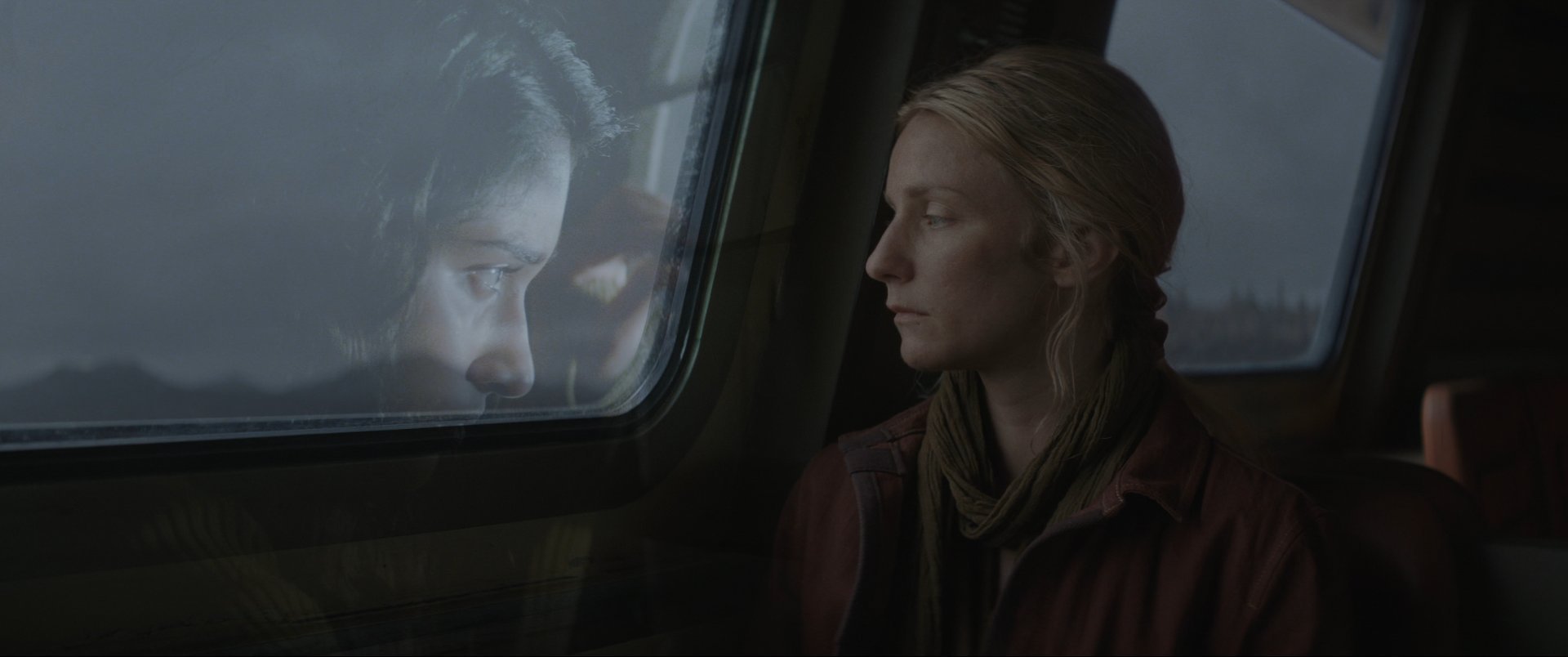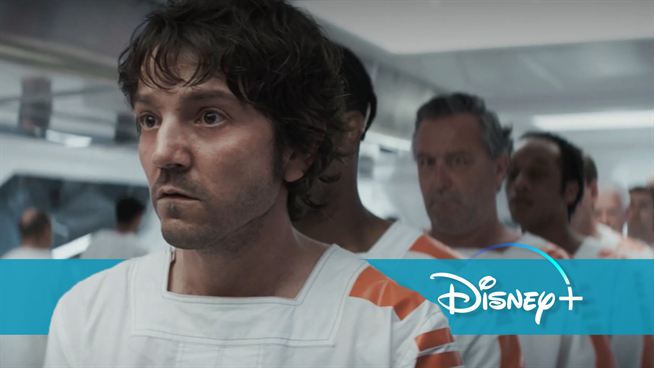The oppression of humans by the Empire has always been one of the most defining themes of “Star Wars”. But never before has it been shown so impressively as in the new episode of “Andor”. Because there, they’re taking a new approach…
Just how bad the Empire is was already made clear by George Lucas. After all, his original trilogy of “Star Wars” was also highly political and clearly anti-fascist. “Andor” is admittedly now on many levels as far away from “Star Wars” as Lucas always had in mind as no other canon content has been before (Large parts of the narrative could also be set in a completely different world, there is hardly anything of the fun for the whole family in the dark, adult narrative)…
However, “Andor” is still as clearly anti-fascist as “Star Wars” was in its best days – and even does one thing for the first time on such a broad scale and more emphatically than any title in the saga: show us the lonely suffering under the thumb of the Empire. Especially the latest episode “Narkina 5”, the eighth episode of the first season of “Andor”, is a masterpiece in this respect.
Here’s my deep-dive into Star Wars Andor Episode 8!
-Why everything in the Narkina-5 prison centres around the number SEVEN
-The meta nod to Snoke with Andy Serkis’ cameo
-Are the prisoners building pieces of the Death Star… or something worse?WATCH:https://t.co/rrC35gA2ys pic.twitter.com/lBT4Q3NGBQ
– Erik Voss (@eavoss) October 27, 2022
IN “NARKINA 5” ALL THE CHARACTERS GET SPACE
For the first time in the course of the series, all the characters who play a major role really appear in an episode. And although a central part of the plot is Cassian Andor’s (Diego Luna) arrival and first month in the titular prison “Narkina 5”, a lot of time is also devoted to the many characters alongside. And it’s not exclusively about continuing the direct story and sprinkling little hints for the future. It is above all the depiction of their lives, their very, very lonely lives, that is in the foreground.
“Star Wars”, of course, has always shown us the diabolical power of the Empire. But there was too little time in the films to dwell on the profound exploration of individual fates. In “Star Wars Rebels” in particular, we often got to see the suffering of the people as well, but it was usually more the group experiences, the classic oppression and squeezing out of the population, which is also illustrated in one episode of “Star Wars: Tales of the Jedi” in particular, using a rural community. “Andor” takes a very different approach here.
THE FIGHT AGAINST EMPIRE MAKES LONELY
In “Andor: Narkina 5” another single person is now gradually brought into focus: the old Maarva (Fiona Shaw), who has stubbornly started her private mini-fight against the Empire. Bix (Adria Arjona), who has lost both men in her life in different ways.
But this is strongest in the scenes between Cinta (Varada Sethu) and Vel (Faye Marsay) also thanks to the high-class dialogue of Beau Willimon (the “House Of Cards”-maker and Oscar-nominated “Ides Of March”-writer wrote this episode). The conversation between the rebel lovers contains so much – and not only because with the hint about Vel’s origin from a rich family, the fan theories that she is Luthen’s (Stellan Skarsgård) daughter get new food.
This is where the loneliness is really felt. Vel, who has abandoned her entire family and seems to have only Cinta in her life, wants only a brief moment of togetherness. For Cinta, that is unthinkable; the empire does not rest either. In the struggle for a free life, she has given up all freedom of her own. That is bitter.

Vel and Cinta looking
Director Toby Haynes then illustrates this quite brilliantly with a dissolve. On our TV screen, Vel and Cinta look directly at each other at one moment, but spatially they are far apart in this scene. One is looking out the window, continuing to look for Andor, the other is on a public transport, moving away from her love, possibly even this planet (after all, it’s the same transport Luthen took when he arrived in Ferrix).
EVEN IN THE MASSES, MEN ARE LONELY
Never imagined we’d get such a stomach churning depiction of incarceration all firmly rooted in peak Star Wars lore.
The detail put into Narkina 5’s daily functions/architecture really makes it feel as if you’re there and just as f*cked. Very Squid Game-likeAndor pic.twitter.com/Iwa2NDh4z1
– The void. (@christen_salem) October 26, 2022
The theme of “loneliness” runs through the entire episode and is even themed in scenes full of people. There’s Mon Mothma (Genevieve O’Reilly) at a party, but still she’s all alone amidst the revelers after the departure of her only confidant Tay Kolma (Ben Miles). And to add insult to injury, shortly afterwards we get the info that she and her husband Perrin Fertha (Alastair Mackenzie) were married at the age of 15. If we thought until now that he was once a love interest, both just estranged, we now know that she too has always been lonely in her fight for a better world.
This is also true of the aforementioned Luthen (Stellan Skarsgård), who in his attempt to bring together all the different rebel groups and organise attacks against the Empire across the galaxy, also feels powerless again and again because he is alone.
HOW THE EMPIRE SQUEEZES THE LAST LIFE OUT OF PEOPLE
In prison, the “Andor” episode then also explicitly shows once again how the Empire squeezes every last ounce of life out of people. It is surely no coincidence that in this episode, which is also named after the prison, so much emphasis is placed on the fates of the individual characters, because somehow they all find themselves in their own personal prison.
So not only does Andor have to break out of the literal prison, but everyone also has to break out of their own, so that at some point the well-known rebellion can really form and the spark of hope for a change can glimmer.
MASTERFUL STORYTELLING IN “ANDOR: NARKINA 5”
How the series creators not only tell this in “Narkina 5”, but also keep linking it to the progression of the larger story is great cinema. In doing so, they dispense with the explaining and elaborating that has become so present in modern narrative cinema, but instead understand, as Rian Johnson once did in “Star Wars: The Last Jedi”, that it is often much better to simply leave the information there for us.
When an inmate commits suicide, it tells us first and foremost how cruel it is in prison, how coldly everyone accepts the suicide. But it also gives us, and especially Andor, the information that after such a death the glowing ground is switched off for a brief moment. It is precisely the many observations of the main character that the makers simply throw in – without pointing out to us in detail whether and how the problems in the organisation of the guards or the communication by sign language between prisoners on different levels play a role in the breakout that is, as we know, still guaranteed to follow.
The next episode of “Andor” will be on Disney+ on 2 November 2022.

